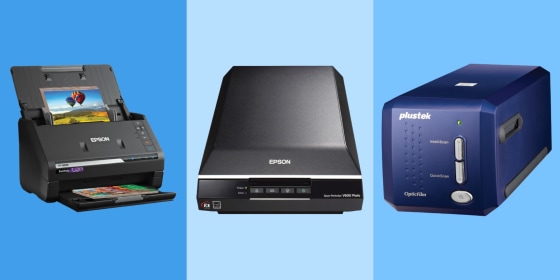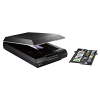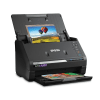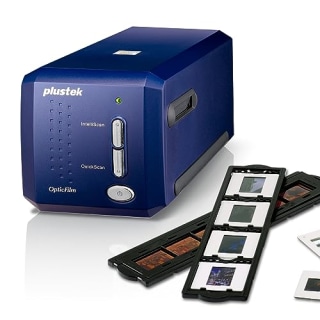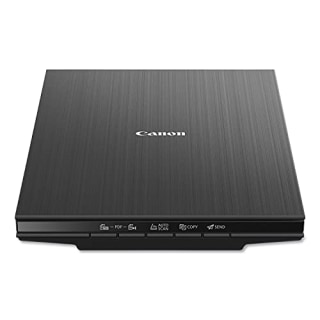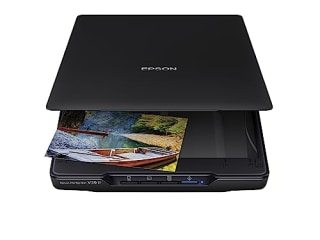Photo scanners are an ideal purchase if you want to scan and store photos — ensuring that old photos, slides and even film negatives are protected in the long term. Physical objects can degrade over time, fade in the light or suffer water damage, depending on the conditions they’re kept in. Either way, you don’t want to leave the fate of your beloved photographs to chance.
Many of the best printers come with some kind of scanning functionality, but usually with office documents in mind. A dedicated photo scanner will be able to digitize high-quality images, ensuring that the detail, color and tone of the original photos are properly recorded. In this guide, we brought together our pick of expert-approved scanners and highly-rated photo scanners, so you can feel confident about saving your favorite photos.
SKIP AHEAD How we picked the best photo scanners | The best photo scanners | How to shop for the best photo scanners | Why trust NBC Select?
How we picked the best photo scanners
When picking these suggestions, I drew on the advice of other gadget specialists, while also using my own expertise as a consumer technology journalist for CNET, TechRadar and NBC Select. When choosing individual models, I kept the below criteria in mind:
- Image quality: When scanning photos, the most important metric is image quality. We looked for models with a decent ppi (pixels per inch) while keeping in mind that not all buyers will want the large file sizes that come with high resolution scans.
- Price: If you’re buying a dedicated photo scanner, rather than an all-in-one printer-scanner-copier, you’re likely paying more for fewer features overall. However, we looked for models at a variety of price points to ensure there was something for every budget.
Want more from NBC Select? Sign up for our newsletter, The Selection, and shop smarter.
The best photo scanners in 2025
Our top picks mostly come from large photo brands like Epson and Canon. Some are able to scan photos as well as film negatives and documents.
Epson Perfection V600
- Fair price
- Extensive features
- Nothing to note at this time
Kaz Marzo, Operations Manager and photography expert at Image Acquire recommends the Epson Perfection V600 for its reasonable price. “It does a great job at keeping the true colors and details of photos, which many expensive scanners fail to do,” he says. The V600 can scan photos, film negatives and documents all in color, and it connects over a single USB cable — a great first choice for those after a simple, effective solution.
Resolution: 6400 x 9600 dpi | Dimensions: 19 x 11 x 4.6 in. | Color: yes | Sheet Capacity: 10 | Connectivity: USB | Weight: 9 lbs
Plustek OpticFilm 8100
- Focus on film
- Included carry bag
- Can’t scan documents
The OpticFilm 8100 isn’t a ‘flatbed’ scanner like some others in this list, meaning it lacks a hinged lid or the space needed to scan A4 documents. But it can scan 35mm film negatives and slides, allowing you to reproduce images digitally and on a larger scale, from a basic 600 dpi resolution to a high-quality 7200 dpi. Marzo calls this a “good” option for anyone scanning film negatives. The OpticFilm8100 comes with a dust-protective bag for easy storage and transport.
Resolution: 7200 x 7200 dpi | Dimensions: 4.7 x 10.7 x 4.7 in. | Color: yes | Sheet Capacity: N/A | Connectivity: USB | Weight: 3.52 lbs
Canon CanoScan Lide 400 Slim Scanner
- Low cost
- Slim design
- No film negatives
If you’re after an affordable photo scanner, look no further than the CanoScan Lide 400. This slim model is just 0.4 inches thick, meaning it won’t take up a large amount of space. However, it’s still able to scan various kinds of photos and documents — with a max resolution of 4800 dpi — as long as you don’t try to scan film negatives or slides, which the Lide 400’s sensor isn’t suitable for. Plus, it has a 4.2 Amazon rating across over 5,900 reviews.
Resolution: 4800 x 4800 dpi | Dimensions: 7.7 x 14.5 x 0.4 in. | Color: yes | Sheet Capacity: 1 | Connectivity: USB | Weight: 3.6 lbs
Epson FastFoto FF-680W
- High speed
- A4 document scans
- No film or slide sensor
This high-speed Epson scanner is great if you need to scan lots of photos in quick succession. With a sheet tray for photographs, you can set up a stack of 36 photos to automatically feed the scanner and scan up to one per second. The 24-bit color depth is a little lower than some 48-bit models on this list, but for efficiency and convenience the FastFoto is hard to beat — and it has a 4.5 Amazon rating with over 3,000+ reviews.
Resolution: 600 dpi | Dimensions: 6.7 x 11.7 x 6.8 in. | Color: yes | Sheet Capacity: 10 | Connectivity: USB | Weight: 8.2 lbs
Epson Perfection V39 II
- Fair price
- Extensive features
- Nothing to note at this time
This slim Epson photo scanner retails for just $99 and offers a compact way to scan photos and documents. It features a 4800 dpi resolution for detailed image quality, and a lid that can be entirely removed to help you fit larger, clunkier objects like books and magazines. At the time of writing, the V39 II has a 4.0 Amazon rating across 4,964 reviews.
Resolution: 4800 x 4800 dpi | Dimensions: 9.9 x 14.4 x 1.5 in. | Color: yes | Sheet Capacity: 1 | Connectivity: USB | Weight: 3.1 lbs
How to shop for the best photo scanners
If you’re after a photo scanner, it’s important to know what features you need before buying.
Know what type of scanner is right for you
While many models can scan multiple types of photos, documents and images, this isn’t true across the board, especially for more affordable scanners. If you’re looking to scan film negatives or transparent slides, for instance, you’ll need a photo scanner with the correct sensor. Some photo scanners only handle film negatives and slides, at the expense of a flatbed scanner that can handle photographs and other paper documents.
Know what image quality and settings are best
Many scanners don’t do a good job, says Marzo, because people don’t “handle the photos carefully and use the correct settings on the scanner” to get the most out of your model. “Many people make mistakes here,” says Marzo. “Scanning at very high settings doesn’t always make the picture better either; it can make the file too big without improving the look of the photo. The best results come from using a good scanner correctly, not just fixing things later on the computer, which can ruin the photo’s original look.”
Meet our experts
At NBC Select, we work with experts who have specialized knowledge and authority based on relevant training and/or experience. We also take steps to ensure all expert advice and recommendations are made independently and without undisclosed financial conflicts of interest.
- Kaz Marzo is the operations manager at Image Acquire, an information hub and community for photography enthusiasts and professionals.
Why trust NBC Select?
I have worked as a gadget reporter since 2017, covering the latest developments in consumer hardware, from TVs and headphones to smart speakers and VR headsets. I previously worked as the News & Features Editor at TechRadar and now freelance for NBC Select, Healthline and The Independent.
Catch up on NBC Select’s in-depth coverage of tech and tools, wellness and more, and follow us on Facebook, Instagram, Twitter and TikTok to stay up to date.
